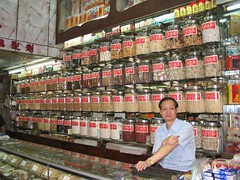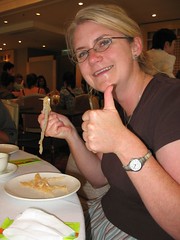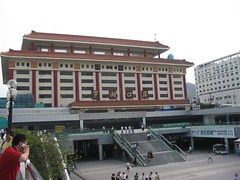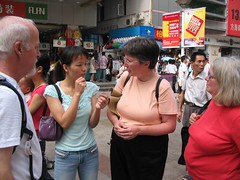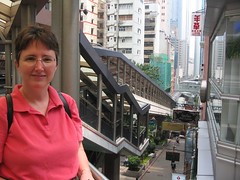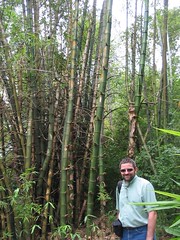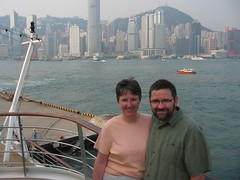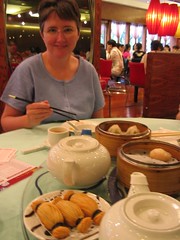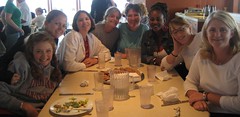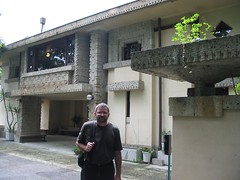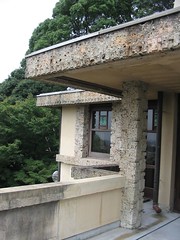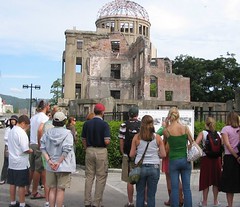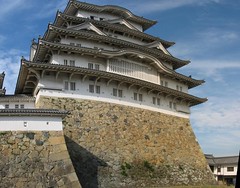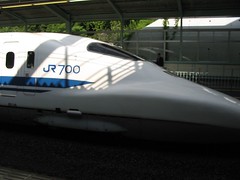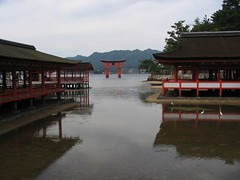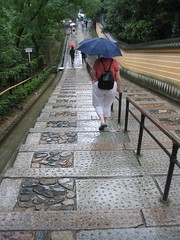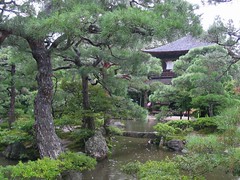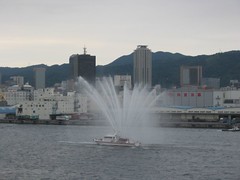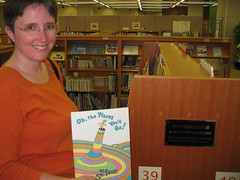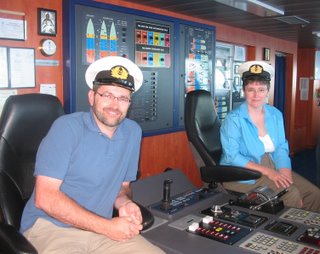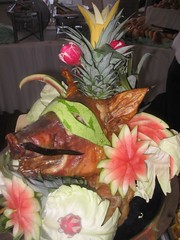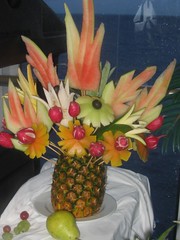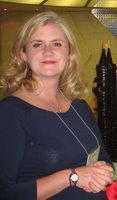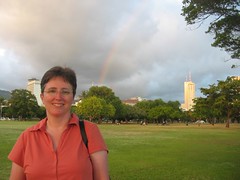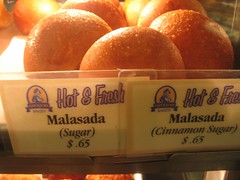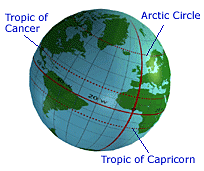Visually it’s the most unique city I’ve visited. The city skyline clustered around the harbor is indescribably impressive on first glance just for the concentration of tall buildings against the waterfront. But after that first wave of reaction, I realized that view stretched for as far as I could see down the shoreline on Hong Kong Island.
When Mary and I explored a small part of the island on the world’s longest escalator system, we were contained in urban canyons of mostly residential high-rise buildings. For the most part, these buildings remain unseen until you make your way inland past the first few blocks of taller commercial buildings. Since these residential buildings are set on slopes leading up to Victoria’s Peak, it’s not unlike the sensation of climbing a steep mountain trail with switchbacks where you find yourself looking out into the very top branches of a tree only a few minutes after walking past the trunk on the way up.
It’s this extremely high population density that supports so many small shops and street markets. So the population density, the street markets, and the streetscapes with signs and billboards extending out to form a linguistic hodgepodge of a canopy over the streets are the visuals I’ll remember from Hong Kong.
As for the people we met, most knew just enough English to give us directions or some such mundane task. They were almost always friendly, returning our smiles. We saw wedding parties and families having picnics. We watched kids at a high-rise school exercising on the top floor surrounded by wire mesh to keep errant soccer balls from dropping 20 stories. Generally, the people seemed quieter and less rambunctious than typical Americans, perhaps a requirement to co-exist in these close quarters.
Some of our class readings and discussions suggest the Chinese culture teaches you to learn early what to expect from life including what role you are to play and then you spend your life doing just that without much thought to other options. So it was with great interest that I read comments in the South China Morning Post, a local English language daily, from a Hong Kong scientist and inventor who battled these Chinese societal limitations on creative thought to see his inventions incorporated by NASA into the International Space Station. He said,
“Americans have an education and research culture that rewards innovative thinkers. Imagine an education system that encourages creative thought rather than being geared towards achieving A grades in exams.”When I read that, I stopped, read it again and then read it again before finishing the article. Granted, he paints our education system with a broad brush, but I think I’m guilty of taking the flexibility that exists in our system for granted and have been too focused on the “A” grade rather than creative thinking.
Yours in pondering the messages of Hong Kong,
Kelly
P.S. We’ll arrive in Ho Chi Minh City, Vietnam on Wednesday and we’ll be spending 3 days in Phan Thiet and Mui Ne without internet access. We’ll try to post again on Saturday. Right now we’re in the South China Sea, 11 degrees 36 minutes North 110 degrees 10 minutes East
